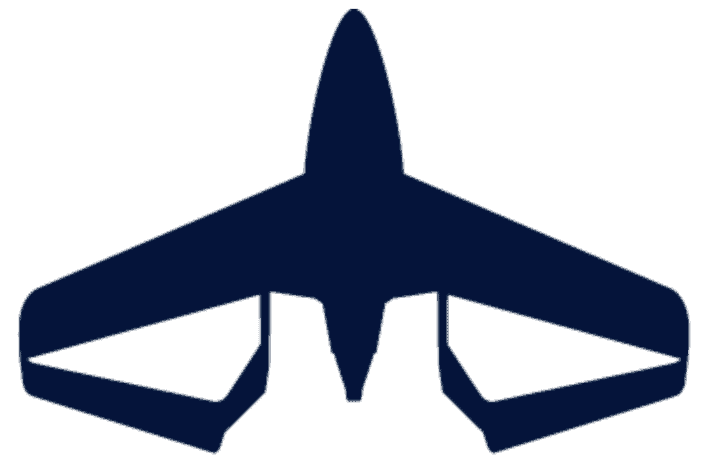By Annamarie Buonocore
Geometry might seem like an abstract subject from school, but it turns out it’s a vital element in aviation, potentially revolutionizing the industry. DBT Aero, a company based in Utah and founded by Michael Duke, is at the forefront of this transformation. The company is developing manned and unmanned aircraft designed to make aviation safer, quieter, and more sustainable. These high-tech, innovative planes promise to be fun to fly and are the first of their kind. Here’s what pilots and aviation enthusiasts can expect.



Download the PDF of this article.
In Flight USA: When did you start DBT Aero? Can you share some of the history and how you got started?
Michael Duke: I learned about Synergy Aircraft and its technology in early 2017. After researching for nearly a year, I proposed to the inventor in December 2017 that we commercialize the technology beyond the kit plane market he was focused on. I started investing and incorporated DBT Aero in June 2019. Synergy Aircraft was merged into DBT Aero in September 2019.
IFUSA: You’ve been at this for a few years now. What does DBT stand for?
MD: DBT stands for Double Box Tail, which is our patented wing and tail geometry.
IFUSA: Tell me more about this aircraft. Is it a two-seater or a four-seater? Is it experimental? Give me a brief description.
MD: It’s more than a single plane. It’s a unique, scalable geometry and a suite of synergistic technologies with outstanding benefits. The design can scale from a small UAS to a double-aisle airliner or freighter. One day, these designs could replace aircraft like the Boeing 777 or Airbus A380 and aircraft used for business jets, cargo, air ambulances, and GA. We’ve demonstrated scalability by building and testing four aircraft of different sizes, including a 3D-printed unmanned aircraft with a five-foot wingspan, unmanned aircraft with eight- and eleven-foot wingspans, and a manned aircraft with a 32-foot wingspan. Our manned aircraft received a Special Airworthiness Certificate in the Experimental R&D category and may evolve into an Experimental Amateur Built category aircraft or a type-certificated aircraft, while the unmanned aircraft may be commercialized as drones.
IFUSA: Can someone buy the geometry and design and then scale it as they wish?
MD: We’re exploring various business models, including licensing, manufacturing kits, selling certificated aircraft, partnering with existing airframers, offering air taxi services, and more.
IFUSA: That’s impressive. What about safety measures in your aircraft?
MD: We have patents for spin resistance, which can reduce accidents caused by low-altitude stalls that progress into spins. Our Double Box Tail geometry performs like a high aspect ratio wing, offering better glide characteristics and giving pilots more options in emergency landings. With the powerplant in the aft portion of the fuselage, pilots and passengers have much better visibility for “see and avoid.”
IFUSA: That high aspect ratio sounds glider-like. What cruise speeds can one expect?
MD: The design is fascinating in that it achieves a high glide ratio while also achieving impressive speed with its swept, short wings reminiscent of a fighter jet. One of our small unmanned aircraft reached over 60 mph at half throttle. Our manned proof-of-concept is projected to cruise well above 200 knots.
IFUSA: Are you planning to offer instruction or set up dealerships?
MD: We’re exploring various options, including the possibility of establishing a dealer network. We aim to be insurance-friendly and provide transition training. Dan Gelston of CAE has joined our team to help with pilot training and simulation.
IFUSA: Where is DBT Aero based?
MD: Our headquarters is in Salt Lake City, Utah, but we have a globally dispersed team and testing locations. Utah’s composite manufacturing capabilities and aerospace network make it a strong contender for a future manufacturing site.
IFUSA: Let’s talk about your background. Have you always been involved in aviation?
MD: I’ve always been passionate about aviation. I started flight lessons in 1988, but life and career often delayed training. I eventually got involved in aviation professionally through a Southern California FBO and later began importing Light Sport Aircraft.
IFUSA: Your website mentions sustainability. How is your aircraft good for the environment?
MD: Our aircraft require less energy for flight, improving fuel efficiency by up to 30%. This dramatically reduces emissions and makes electric aircraft more viable due to the lighter energy demand. We are propulsion system agnostic and can adapt to new energy technologies.
IFUSA: Thank you!
MD: Thank you. Readers can learn more at dbt.aero.

